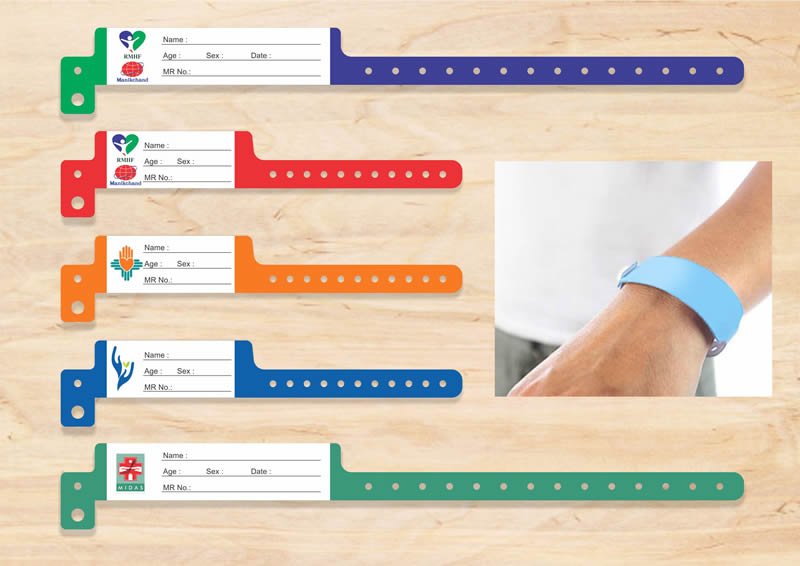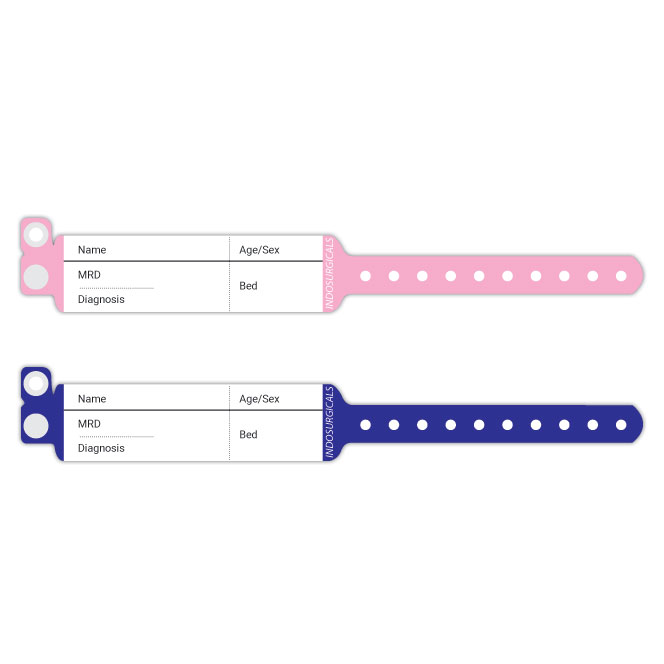Top Qualities to Look for in a Sturdy Patient Identification Band
Top Qualities to Look for in a Sturdy Patient Identification Band
Blog Article
A Comprehensive Guide to Patient Identification Band as a Vital Medical Supply
In the huge landscape of healthcare, Patient Identification bands have actually emerged as a crucial tool (patient identification band). These bands, teeming with necessary information, work as the very first line of protection against medical mistakes and guarantee smooth Patient care. As we start to explore these clinical materials comprehensive, we discover the intricacies of their style, use, and effect on Patient safety and security, while meaning the guarantee they hold for future clinical practices
The Duty of Patient Identification Bands in Medical Care
The value of Patient Identification bands in health care can not be overemphasized. These easy wristbands serve as the primary technique of making certain Patient identity, lowering the risk of clinical mistakes and improving general Patient security. Patient Identification bands supply a system of checks and balances, a fail-safe against prospective mistakes, and a constant reminder of the specific behind the treatment.
Decoding the Details on Patient Identification Bands
While they may seem easy at a glimpse, Patient Identification bands bring important info that can considerably influence the program of a client's treatment. These bands generally display the Patient's name, day of birth, and an unique identifier, such as a medical record number. Additionally, the barcode found on these bands can be scanned to access the Patient's digital wellness record, supplying a wide range of info to medical care providers.
Different Kinds Of Patient Identification Bands: A Closer Appearance
In the world of Patient Identification, there are several kinds of bands that serve distinct objectives. Barcode Identification Bands, RFID Tag-based Bands, and Color-Coded Patient Bands are the key categories - patient identification band. Each kind provides distinct attributes and benefits, which will certainly be checked out in the following areas
Barcode Identification Bands
Offering a significant enhancement in Patient safety and security, barcode Identification bands have ended up being a crucial tool in the medical field. These bands shop critical Patient information in a barcode layout that's rapidly obtainable with a scan. This lowers the opportunity of human error in Patient Identification and information access, which is important in medical treatments. The barcode system makes information like Patient name, case history, allergic reactions, and recommended medicines easily available. This makes certain fast and right Patient Identification, specifically in emergency situations where every 2nd matters. Barcode Identification bands are also simple to make use of, cost-effective and sturdy, making them a vital part of modern-day health care. Importantly, these bands have substantially decreased clinical errors and enhanced Patient safety.
RFID Tag-based Bands
One more innovative strategy in Patient Identification is making use of RFID Tag-based bands. These bands make use of Radio Frequency Identification (RFID) technology to give a secure kind of Patient Identification. Unlike barcodes, RFID tags can keep a lot even more information and can be reviewed without direct line of sight. This implies that medical care specialists can access important Patient info, also if the band is covered by clothes or bed linens. Moreover, RFID tags can be reprogrammed with updated information as needed, improving their capability. These bands can be much more expensive than other types of Identification, and there are privacy problems connected with the usage of RFID technology. Regardless of these obstacles, RFID tags supply substantial potential for boosting Patient security and performance in healthcare.
Color-Coded Patient Bands
Color-coded Patient bands stand as a simple yet effective device in Patient Identification. These bands, prevalent in medical facilities and centers, make use of various shades to suggest numerous Patient allergies, conditions or risks, guaranteeing instant recognition by health care experts. Hence, the color-coded Patient band system is a crucial element of Patient safety and security and efficient healthcare delivery.

Usage of Patient Identification Bands: Procedures and Procedures
In health care setups, using Patient Identification bands plays a critical duty in making certain Patient security and minimizing medical mistakes. These bands, typically constructed from sturdy, hypoallergenic product, are affixed to the Patient's wrist or ankle, presenting important details such as name, day of birth, and an unique identifier. The process is generally implemented throughout admission, with the info double-checked for accuracy. For infants, bands are connected to both the infant and mom to avoid inequalities. In senior treatment, 2 bands may be used for people with dementia to ensure proper Identification. Following these methods helps to avoid Patient misidentification, a precursor to significant medical errors. This technique is a testimony to the vital nature of Identification bands in Patient care.
The Impact of Identification Bands on Patient Safety
Identification bands play an important role in preserving Patient security in health care settings. Their usage can dramatically reduce clinical mistakes by guaranteeing that the best Patient receives the correct treatment. These simple devices contribute to enhancing the high quality of care by supplying an additional layer of confirmation to Patient identities.
Reducing Clinical Mistakes
An incredible number of medical mistakes, approximated to be in the hundreds of thousands each year, can be mapped back to misidentification of individuals. go to the website These mistakes lead not only to hurt to the Patient however additionally cause pricey legal and reputational problems to the healthcare establishment. Patient Identification bands have emerged as a very useful device in substantially reducing these errors. They give a basic, yet reliable, approach of properly identifying people. Most importantly, these bands make certain that every Patient is appropriately matched with their medical records, tests, and treatments, consequently dramatically reducing the risk of medical errors. By guaranteeing exact Patient Identification, these bands add to improved Patient security, constructing trust and self-confidence in the health care system.
Making Certain Correct Therapy
Securing Patient safety, Identification bands play an essential duty in making certain the correct management of therapies. They provide a straightforward yet efficient method for correctly identifying people and matching them to their medical records. This minimizes the risk of treatment errors, specifically in high-pressure scenarios where errors can have extreme repercussions. These bands have crucial details such as the Patient's name, date of birth, and one-of-a-kind Identification number. Consequently, they assist in accurate cross-referencing with electronic wellness documents, prescription orders, and procedural routines. In repercussion, the opportunity of misdiagnosis, drug mistakes, or check step-by-step mix-ups is significantly lowered. Essentially, Patient Identification bands function as a crucial guard in the medical care setting, dramatically contributing to Patient safety and security and ensuring proper treatment.

Enhancing Top Quality Treatment
While they may appear unimportant, patient Identification bands significantly improve the top quality of treatment supplied in medical care setups. They are a necessary tool in making sure Patient security due to their capacity to offer instant access to important information. The adoption of Patient Identification bands is, as a result, a required procedure in all healthcare environments.
Checking out the Future of Patient Identification Bands in Clinical Practice

Conclusion
Patient Identification bands play a vital function in healthcare, guaranteeing precise Patient Identification and decreasing medical mistakes. As clinical techniques proceed to advance, Patient Identification bands will remain a crucial part of the medical care system.
While they may seem simple at a glance, Patient Identification bands carry important information that can considerably influence the program of an individual's treatment.Color-coded Patient bands stand as an easy yet effective tool in Patient Identification.In healthcare setups, the use of Patient Identification bands plays a critical function in ensuring Patient security and lowering medical errors. In significance, Patient Identification bands offer as an essential guard in the health care setting, considerably adding to Patient safety and security and ensuring correct therapy.
Patient Identification bands play a vital role in healthcare, making certain exact Patient Identification and reducing clinical mistakes.
Report this page